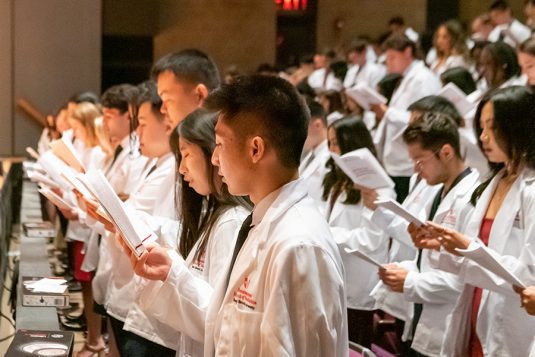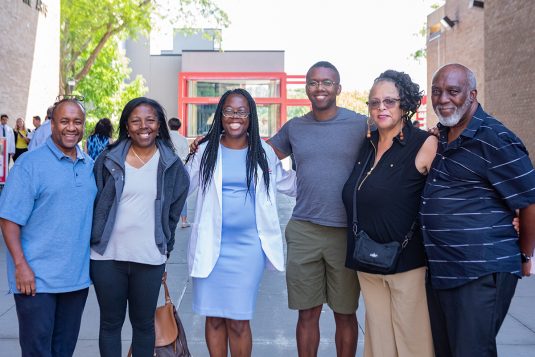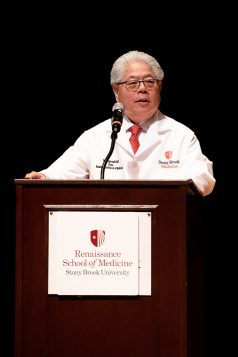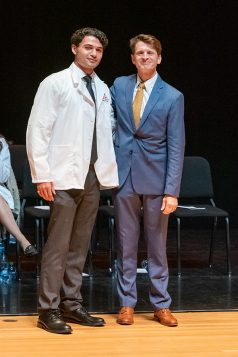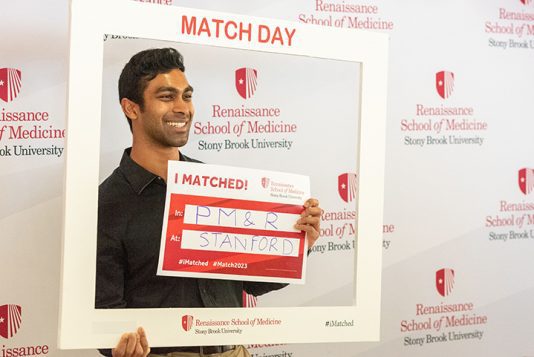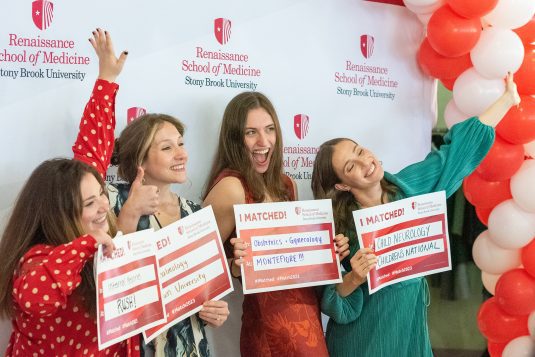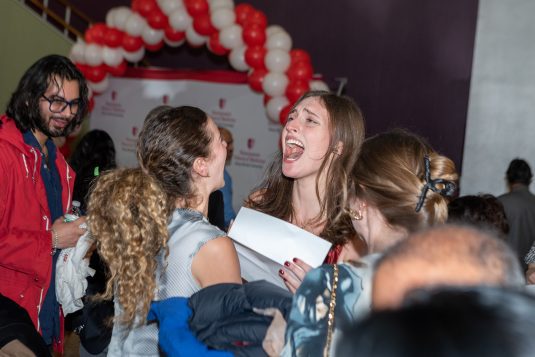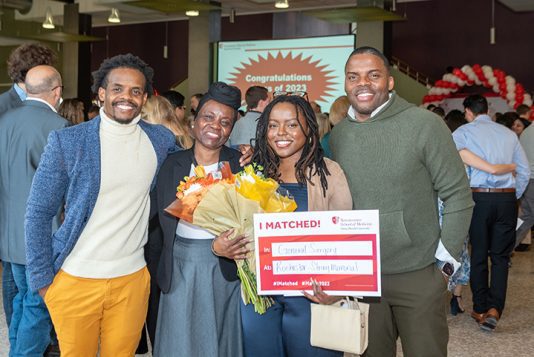ASM honors the Department for its decades of work against infectious diseases
The Department of Microbiology and Immunology in the Renaissance School of Medicine (RSOM) at Stony Brook University was named a “Milestones in Microbiology” site for its advancements in the diagnosis and treatment of infectious diseases globally. The designation by the American Society for Microbiology (ASM) recognizes academic and research programs in which “major developments and pivotal discoveries occurred.”
The RSOM Department is only the 20th program nationally to receive this distinction, the third in New York State and second on Long Island. Faculty from the Department and University gathered at a Wang Center Ceremony at Stony Brook University on October 17 to commemorate the honor. They received a plaque from the ASM that commemorates the outstanding research and discoveries by the Department at large, since its inception at Stony Brook in 1972.
“The designation of the Department of Microbiology and Immunology as a Milestones in Microbiology Site is an honor and recognizes the impact the Department has made through its groundbreaking discoveries,” said David Thanassi, PhD, the Zhang Family Endowed Chair of the Department of Microbiology and Immunology. “This distinction not only reinforces the significant contributions of our former and current faculty, students and staff, but also raises the profile of the Department and University to the wider scientific community.”
“ASM is delighted to recognize Stony Brook University’s Department of Microbiology and Immunology as a ‘Milestones in Microbiology’ site for its significant contributions to the microbial sciences,” said Theresa Koehler, PhD, ASM President. “The university’s pioneering work investigating causative agents of human diseases have had far-reaching impacts in the sciences and society at large.”
The Department was awarded the Milestones distinction for its broad research and many discoveries. Specifically, the ASM recognized the following accomplishments:
- The landmark discovery by Founding Department Chair Joseph Kates, PhD, that viruses could package enzymes required for their replication, with the first demonstration of the vaccinia virus encapsulating the DNA-dependent RNA polymerase enzyme. This laid the groundwork for targeting viral polymerases as a widespread therapeutic strategy.
- The discovery of Borrelia burgdorferi, the causative agent of Lyme disease, by Jorge Benach, PhD and colleagues, along with its isolation from patients and characterization of its environmental reservoir, paved the way for successful antibiotic therapies.
- The first description of the de-novo chemical-biochemical synthesis of a virus (poliovirus) in the absence of a natural template by Dr. Eckard Wimmer and the co-discovery of the human receptor of polio virus. This marked the beginning of the total synthesis of microorganisms in the absence of natural templates, enabling new strategies in virus vaccine development.
“As a member of the faculty for several decades, it has been inspiring to witness the emergence of ideas and findings in which the outcomes have had such tremendous impact,” said Carol Carter, PhD, Distinguished Professor in the Department of Microbiology and Immunology. “Over the years, I have worked with incredible colleagues, students and supporting staff.”
Five decades impacting infectious disease discovery
In addition to the highlighted research of Drs. Kates, Wimmer and Benach, the Department during its five decades made other groundbreaking discoveries. These include pioneering work in molecular biology on the structure of DNA and regulatory mechanisms of RNA, foreshadowing research by others leading to the Nobel prize this year on the role of regulatory RNAs in eukaryotic cells.
The Department has contributed major findings related to tumor formation and cancer, and has long been a leader in research on pathogenic viruses, bacteria and fungi, revealing how these organisms cause infections and interact with our immune defenses. This research has yielded fundamental biological insights and provided a foundation for the development of therapeutics for the prevention and treatment of disease.
Some of the more recent work impacting the world of infectious diseases includes the role of how cancer-causing herpesviruses manipulate the host to establish life-long infections, advancing the understanding of Adenovirus replication, and unraveling the structure of bacterial appendages that enable kidney infections.
“Although the Milestones in Microbiology designation commemorates past accomplishments, it also sets the stage for future innovations and motivates the Department to keep pushing boundaries, pursue new questions, and lead the way in solving the challenges of tomorrow,” said Peter Igarashi, MD, the Knapp Dean of the RSOM, who pointed out that the Department has had consistently strong funding success, including 17 grants totaling more than $8 million in funding from the National Institutes of Health in fiscal year 2024.
During the ceremony the department also received a Certificate of Recognition, a Proclamation by New York State Assemblyman Hon. Ed Flood.
For more about the ASM Milestones Program and list of other awarded institutions nationally see this link.
The Department of Microbiology and Immunology is one of 25 departments within the RSOM. It is dedicated to advancing the knowledge of the fundamental causes, means of prevention and treatment of human diseases, and to educating the next generation of scientific investigators in infectious diseases and related fields. For more see this link.



